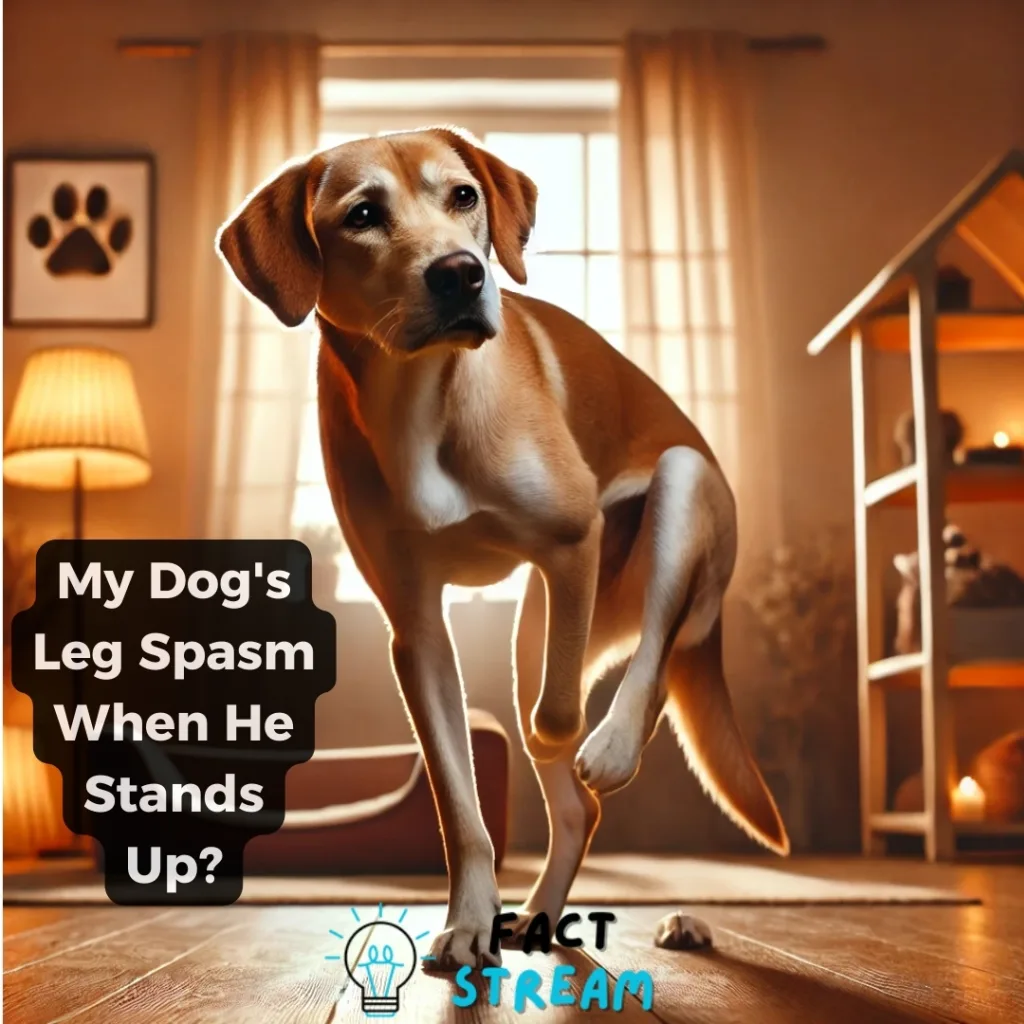My Dog’s Leg Spasm When He Stands Up?
Have you ever seen your dog’s leg suddenly jerk when he stands up? It can be a little scary, but don’t panic! Those sudden movements are called muscle spasms, and they’re pretty common in dogs. Sometimes they’re just a little twitch, and other times they can be stronger and look like a cramp.
Muscle spasms happen when a muscle contracts on its own. It’s like a charley horse in your leg! It can happen anywhere in your dog’s body, but you might notice it most in their back legs when they’re getting up.
What Causes Muscle Spasms in Dogs?
Lots of things can cause muscle spasms in dogs. Here are a few:
- Too Much Exercise: If your dog has been playing really hard, their muscles can get tired and cramp up. This is especially common in dogs that are overweight.
- Injuries: Your dog might have hurt their leg, even if you didn’t see it happen. A sprain or strain can cause muscle spasms. Even worse, they could have a slipped disc or a pinched nerve!
- Not Enough Water: Just like us, dogs need water to stay hydrated. When muscles get dehydrated, they’re more likely to cramp. Make sure your dog always has fresh water, especially on hot days and after exercise.
- Low Blood Sugar: Sometimes, a dog’s blood sugar can drop too low, making their muscles weak and more likely to spasm. This can happen with puppies, small breeds, and dogs that are stressed.
- Problems with Nerves: If there’s something wrong with your dog’s nerves, it can make their muscles twitch or spasm. This can be a sign of a condition like degenerative myelopathy.
- Other Stuff: Some diseases, like distemper, can cause muscle spasms too. And, if your dog gets into something poisonous, like chocolate, that can cause spasms as well.
Is It a Spasm, a Twitch, or a Seizure?
Muscle spasms, twitches, and seizures can all look similar, but they’re not the same thing:
- Spasm: A spasm is a strong, involuntary contraction of a muscle. It can be painful and last for a few seconds or even minutes.
- Twitch: A twitch is a small, quick muscle contraction. It’s usually not painful and only lasts for a second.
- Seizure: A seizure is caused by abnormal brain activity and usually affects the whole body. Your dog might lose consciousness, fall down, jerk their legs, or drool. Seizures are serious and need to be checked out by a vet.
What to Do When Your Dog’s Leg Spasms
If your dog’s leg is spasming, here’s what to do:
- Pay Attention: Watch your dog carefully. How often do the spasms happen? Do they seem to be in pain? Is the leg swollen?
- Give Them a Break: If your dog has been exercising, let them rest and have some water.
- Gentle Rub: If your dog lets you, gently rub the leg that’s spasming. This might help relax the muscles.
- Cold Pack: You can also try putting a cold pack wrapped in a towel on the leg for a few minutes.
- Call the Vet: If the spasms keep happening, are really bad, or your dog seems sick, call your vet.
At the Vet
The vet will ask you about your dog and what happened. They will also check your dog’s leg to see if anything is broken or out of place. Sometimes, the vet might want to do some tests, like blood work or x-rays, to see what’s going on.
Making It Better
Once the vet figures out what’s wrong, they’ll tell you what to do. Sometimes, your dog might just need to rest and drink lots of water. If they’re in pain, the vet might give them medicine. In some cases, the vet might recommend physical therapy to help strengthen your dog’s muscles.
Preventing Spasms
Here are a few things you can do to help prevent muscle spasms in your dog:
- Warm Up and Cool Down: Just like people, dogs need to warm up their muscles before exercise and cool down afterward. Take your dog for a short walk before and after playing fetch or going for a run.
- Water, Water, Water: Always have fresh water available for your dog, especially when it’s hot or they’ve been playing.
- Don’t Push It: If your dog is older or has had leg problems before, don’t let them overdo it.
It can be scary to see your dog’s leg spasm, but try not to worry too much. In most cases, it’s nothing serious and can be treated easily. Just watch your dog carefully, and if you’re concerned, don’t hesitate to call your vet.


